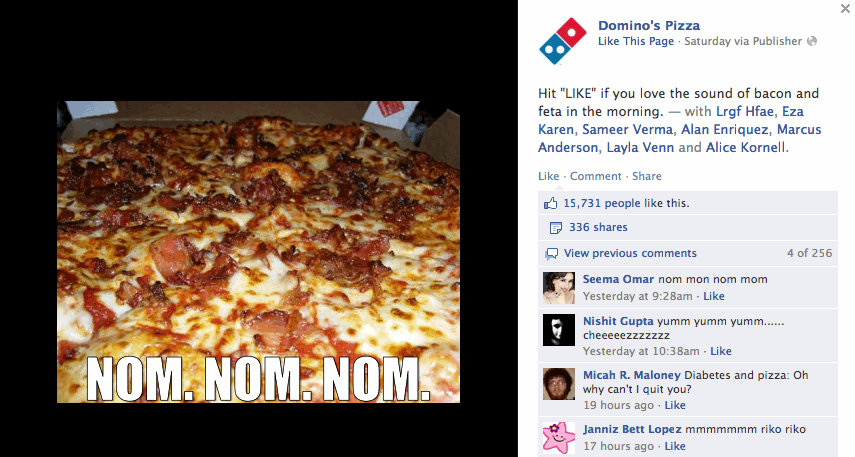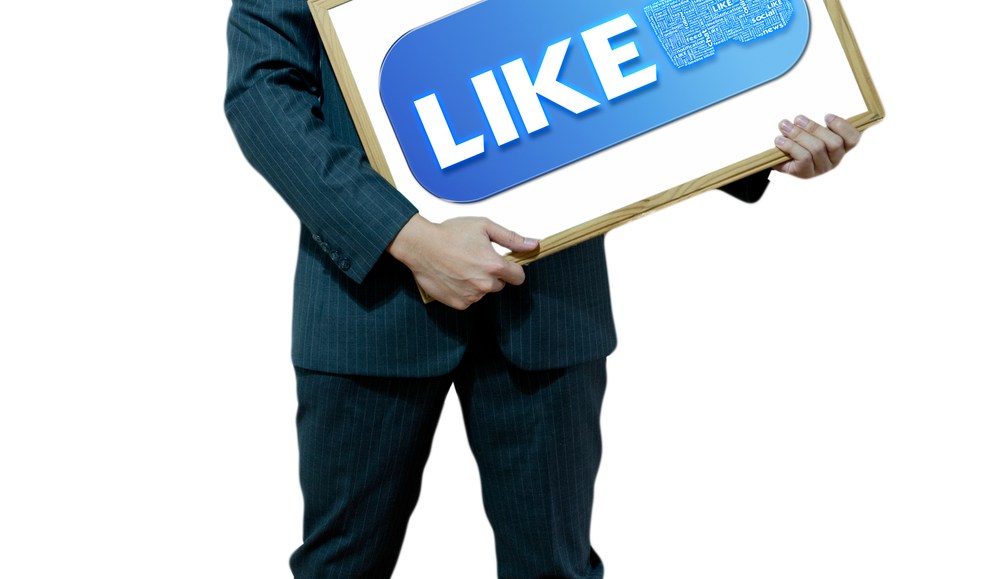
Brands aren’t always the funniest or most entertaining when it comes to their social media output.
But it seems there is a reason that brands keep posting nonsensical, meaningless stuff on Facebook and Twitter rather than take extra time and effort to post only relevant and interesting content: It works! People still like and engage with the random, crappy stuff that brands post.
I know. It doesn’t make sense. But here is the depressing evidence to prove it. Check out these five examples of brands posting incredibly mindless, cheesy things to their Facebook pages that resulted in thousands of likes and interactions.
1. Domino’s: This post about the sound of bacon and feta in the morning (what sound does feta make?) got 15,731 likes, 336 shares and 256 comments.
2. Snapple: This simple little post that doesn’t even involve an image got 1,372 likes and 25 comments.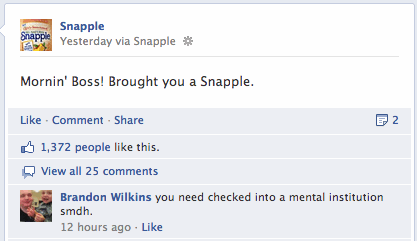
3. Hershey’s: This cheesy true-or-false question post got 7,195 likes, 366 shares and 182 comments.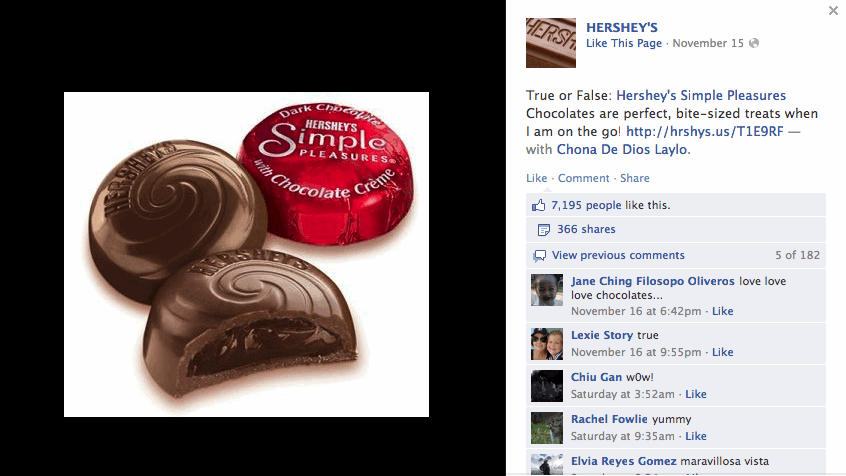
4. Pringles: This corny post letting you know not to worry, that Pringles’ Facebook page will still be here after you go run out to grab more Pringles got 2,798 likes, 68 shares and 71 comments. 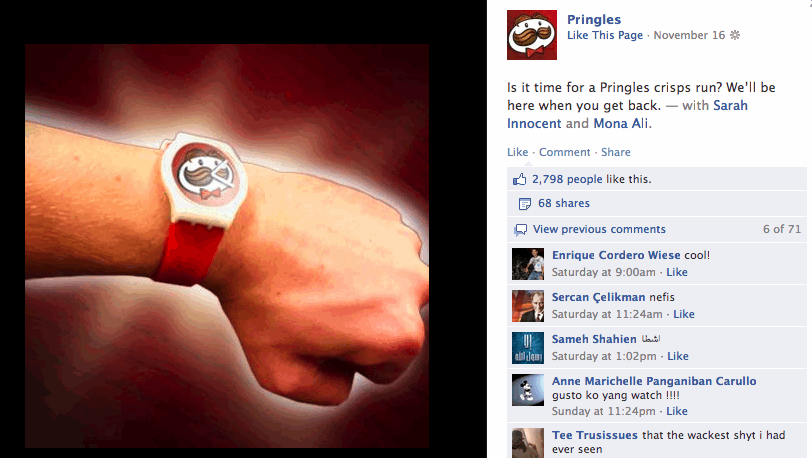
5. Swiffer: This unrealistic Swiffer post (who would ever use a duster as a karaoke mic?) got 3,053 likes, 170 shares and 698 comments. 
Main story image via Shutterstock
More in Marketing

Pitch deck: How Amazon is recasting Twitch as a core part of its CTV pitch
Amazon is positioning Twitch as a defining asset in its CTV ambitions.

Netflix transforms former mall department stores into experiential venues
The location in Dallas opens this week, and one at the King of Prussia mall near Philadelphia opened last month.

Future of Marketing Briefing: AI has created a new talent paradox in programmatic agencies
The job isn’t execution anymore. AI handles that. The job is judgement.
